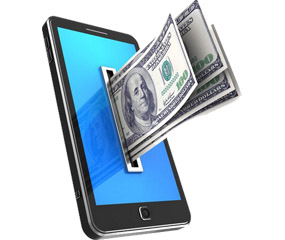The mobile wallet solution will enable the distribution and use of digital aid in emergency situations.
According to a recent press release from Ericsson, the Swedish-based multinational telecommunications and equipment corporation is developing Ericsson Emergency Wallet, which is a mobile financial services solution designed for immediate deployment directly following a disaster or crises to support both affected populations and humanitarian organizations providing aid to these devastated regions.
The idea behind the emergency wallet is to help bring relief where financial infrastructure is lacking.
While this mobile wallet will no doubt be beneficial when a crisis strikes in any part of the world, the Ericsson Emergency Wallet is chiefly being developed for use in emergency circumstances where financial infrastructure is poor or virtually non-existent. It will provide relief workers and impacted populations with relief funds, helping to overcome problems that often arise with handling cash such as traceability, safety and expense.
The Ericsson Emergency Wallet could extend the benefits of relief funds to the people who desperately need them.
 According to the press release, there is an urgent need for an emergency wallet solution. The reason is that mobile money and mobile wallets are among the safest, fastest and most efficient methods of extending the basic financial transaction benefits to the people who require them.
According to the press release, there is an urgent need for an emergency wallet solution. The reason is that mobile money and mobile wallets are among the safest, fastest and most efficient methods of extending the basic financial transaction benefits to the people who require them.
Many of the telecommunication company’s humanitarian partners have requested digital financial services solutions for disasters and other situations of emergency, and Ericsson has already presented its wallet plans at the World Humanitarian Summit, in support of the United Nations’ Connecting Business Initiative.
Moreover, the design and prototyping of the emergency wallet is co-funded through the Level One Project from the Bill & Melinda Gates Foundation.
“In partnership with the Bill & Melinda Gates Foundation, we are helping to build a new ecosystem that creates better opportunities for global financial inclusion. This unique combination of partners will be a powerful catalyst for bringing mobile financial services to humanitarian relief efforts everywhere,” stated Elaine Weidman-Grunewald, Vice President, Sustainability and Corporate Responsibility, Ericsson.
The Ericsson Emergency Wallet shows the potential ICT (Information and Communication Technology) has to revolutionize humanitarian response.
Report finds more consumers than expected turn to their mobile devices to handle the bulk of their shopping activity.
According to a fourth-quarter 2015 Mobile Wallet Report from Nielsen, 37 percent of participants said their purchases begin with mobile commerce over one-quarter to half of the time. Considering many American’s own smartphones and these devices have become an important part of their daily lives – functioning as a constant companion and information resource – it only makes sense that most people who own these devices would use them as a research tool prior to making a purchase. That said, consumers don’t limit their mobile shopping practices to only smartphones.
The report found that there are many tablet shoppers as well.
The results of the study revealed that 72 percent of mobile shoppers research an item on their smartphones before buying. What’s more, 70 percent check the price of an item and 60 percent use a store locator to find the store where they can purchase the product that they want.
 However, the report also discovered that consumers rely on tablet commerce, too. While not used nearly as frequently as smartphones for locating a store (a mere 31 percent to the smartphone’s 60 percent), when it comes to researching an item before purchasing it, 66 percent of respondents said that they used tablets, with 57 percent using tablets for checking the price of an item.
However, the report also discovered that consumers rely on tablet commerce, too. While not used nearly as frequently as smartphones for locating a store (a mere 31 percent to the smartphone’s 60 percent), when it comes to researching an item before purchasing it, 66 percent of respondents said that they used tablets, with 57 percent using tablets for checking the price of an item.
Yet, interestingly, when it comes to making an actual purchase via a mobile device, more respondents made purchases via their tablets than smartphones. For instance, 28 percent of participants purchased a service via their tablet compared to 21 percent of participants who used their smartphone.
When engaging in mobile commerce, certain factors are important to the consumer’s experience.
Nielsen’s report also examined “Factors that are important when shopping on mobile Q4 2015” and – not surprising – found that 62 percent of mobile consumer who took part in the study want a highly visual experience and want to be able to view product pictures above all else when using their smartphone for shopping. Shoppers (48 percent of respondents) also want mobile-friendly websites, while 44 percent of participants said that it was also very important for there to be a product description.
Based on these findings, it’s clear that the mobile commerce trend is growing; giving marketers and advertisers who want to reach their desired target market, new opportunities to do so.
 According to the press release, there is an urgent need for an emergency wallet solution. The reason is that mobile money and mobile wallets are among the safest, fastest and most efficient methods of extending the basic financial transaction benefits to the people who require them.
According to the press release, there is an urgent need for an emergency wallet solution. The reason is that mobile money and mobile wallets are among the safest, fastest and most efficient methods of extending the basic financial transaction benefits to the people who require them.
 However, the report also discovered that consumers rely on tablet commerce, too. While not used nearly as frequently as smartphones for locating a store (a mere 31 percent to the smartphone’s 60 percent), when it comes to researching an item before purchasing it, 66 percent of respondents said that they used tablets, with 57 percent
However, the report also discovered that consumers rely on tablet commerce, too. While not used nearly as frequently as smartphones for locating a store (a mere 31 percent to the smartphone’s 60 percent), when it comes to researching an item before purchasing it, 66 percent of respondents said that they used tablets, with 57 percent 